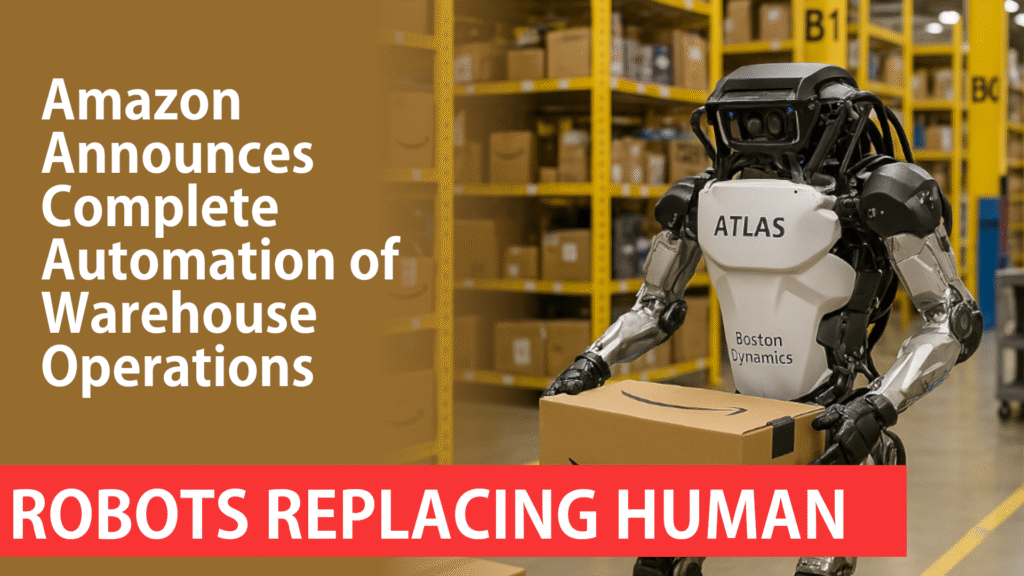
In a move that is already sending shockwaves through the labor market and igniting widespread public debate, Amazon announced today that it will begin phasing out all human warehouse floor workers in favor of advanced humanoid robots developed by Boston Dynamics. The sweeping automation initiative will begin on the West Coast and is expected to reach all U.S. fulfillment centers by the end of 2026.
The new robotic workforce, dubbed “Atlas Prime,” is the latest generation of humanoid machines from Boston Dynamics, capable of performing the same physical tasks as humans—lifting, sorting, scanning, and packaging—with increased speed, precision, and reliability. The deployment is the largest of its kind in the world, involving tens of thousands of robots operating 24/7.
“This marks a new era for supply chain logistics,” said Max Holland, Amazon’s Vice President of Fulfillment Technologies, in a press briefing this morning. “Our collaboration with Boston Dynamics allows us to enhance safety, efficiency, and consistency at a scale that was never before possible.”
As part of the initiative, all floor-level warehouse roles currently filled by human employees will be eliminated over the next 18 months. Amazon has stated that it will provide severance packages and upskilling opportunities for the roughly 135,000 affected workers across the U.S. However, labor advocates and unions are already voicing strong criticism of the decision.
“This is the most aggressive form of automation we’ve seen in modern corporate history,” said Angela Reyes, spokesperson for the National Warehouse Workers Union. “While technological progress is inevitable, abandoning an entire workforce with vague promises of retraining is both unethical and socially irresponsible.”
Boston Dynamics CEO Robert Playton emphasized the safety and adaptability of the new Atlas Prime models. “These robots are not science fiction—they are real, robust, and ready to work,” he said. “With AI-driven vision systems and dynamic mobility, they are more capable than ever of handling the fast-paced environment of Amazon fulfillment centers.”
The announcement has triggered immediate political and economic reactions. Several lawmakers have already called for hearings on automation’s impact on employment, while shares of robotics companies surged in after-hours trading.
Amazon, however, remains firm in its vision.
“This transformation will allow us to deliver to customers faster and with even greater accuracy,” Holland stated. “And in the long term, it opens doors to new kinds of human jobs focused on system oversight, maintenance, and AI coordination.”
For many former warehouse employees, those reassurances ring hollow.
“I gave Amazon seven years,” said Marcus Little, a fulfillment associate in Moreno Valley, California. “Now a robot’s taking my place. Where do I go from here?”
As Amazon’s robotic revolution unfolds, the U.S. watches closely, grappling with what the future of work looks like when the workforce becomes fully synthetic.